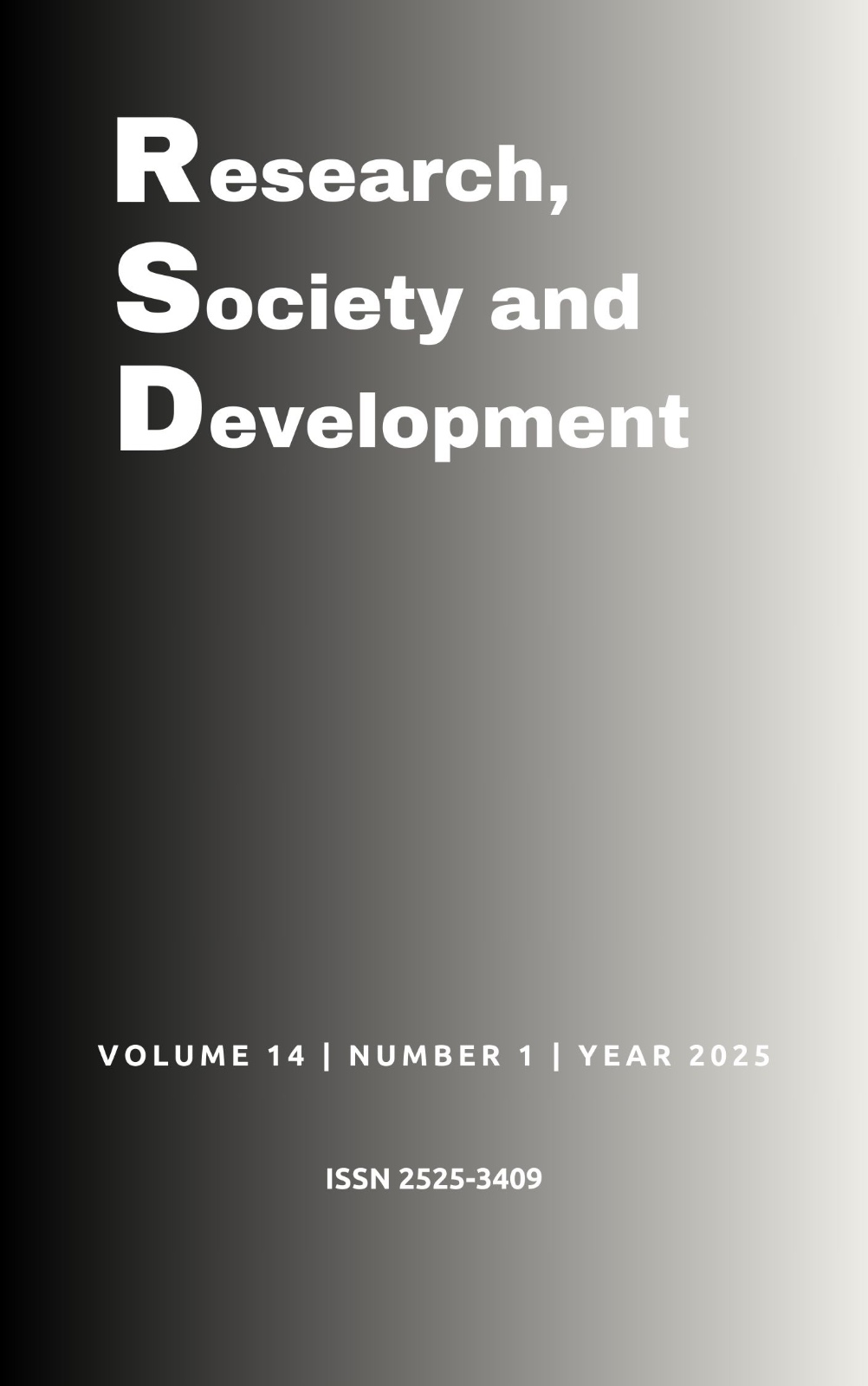Educational model using 3D printer in teaching prototyping for problem solving in healthcare
DOI:
https://doi.org/10.33448/rsd-v14i1.47883Keywords:
3D printing; Active Methodologies; Innovation.Abstract
Biochemical, physiological and immunological reactions resulting from human homeostasis can be better explained with an accurate printed model of reality. Creating biological structures through 3D printing helps healthcare students better understand complex subjects. Going beyond the slide bias and animated videos, to physical tactile and assembly structures, so that the student becomes the protagonist, helps to stimulate students' knowledge and educational knowledge. This study seeks to present a proposed application for the 3D printer in the educational context, at a university in the city of Gurupi-TO (UNIRG), associating it with problem solving. On that occasion, students used knowledge acquired in the classroom to address the problem that permeates several educational institutions: the lack of teaching material for use in practical activities. From there, use the active Design Thinking methodology to assist in the process, building ideas and prototypes for use as teaching material. The results indicate that the 3D printer can facilitate the teaching of content that makes up the academic curriculum, whether by encouraging students to build models or using ready-made models as teaching material.
References
Aguiar, L. D. C. D. (2016). Um processo para utilizar a tecnologia de impressão 3D na construção de instrumentos didáticos para o ensino de ciências. Journal of Chemical Information and Modeling, 6(2), 1689–1699.
Andrade, T. Y. I., & Costa, M. B. (2016). O laboratório de Ciências e a realidade dos docentes das escolas estaduais de São Carlos-SP. Revista Química Nova na Escola, São Paulo, 38(3), 208-214.
Berman, B. (2012). 3-D printing: The new industrial revolution. Business Horizons, 55(2), 155-162.
Braida, F. (2014). Da aprendizagem baseada em problemas à aprendizagem baseada em projetos: Estratégias metodológicas para o ensino de projeto nos cursos de Design. In Actas de Diseño. Diseño en Palermo, 17(17), 142-146. https://doi.org/10.18682/add.vi17
Doubrovski, Z., Verlinden, J. C., & Geraedts, J. M. P. (2011). Optimal design for additive manufacturing: Opportunities and challenges. In Proceedings of the ASME 2011 International Design Engineering Technical Conferences and Computers and Information in Engineering Conference.
Ford, S., & Despeisse, M. (2016). Additive manufacturing and sustainability: An exploratory study of the advantages and challenges. Journal of Cleaner Production, 137, 1573-1587.
Gibson, I., Rosen, D. W., & Stucker, B. (2014). Additive manufacturing technologies: 3D printing, rapid prototyping, and direct digital manufacturing. Springer.
Gil, A. C. (2008). Como elaborar projetos de pesquisa (4ª ed.). Atlas.
Hargreaves, A. (2011). O ensino como profissão paradoxal. Pátio: Revista Pedagógica, Porto Alegre, 4(16), 13-18.
Levin, B. (2001). Energizing teacher education and professional development with problem-based learning. ASCD.
Onisaki, H. H. C., & Vieira, R. M. B. (2019). Impressão 3D e o desenvolvimento de produtos educacionais. Revista de Estudos e Pesquisas sobre Ensino Tecnológico (EDUCITEC), 5(10), 128–137.
Orlando, T. C., et al. (2009). Planejamento, montagem e aplicação de modelos didáticos para abordagem de biologia celular e molecular no ensino médio por graduandos de ciências biológicas. Revista Brasileira de Ensino de Bioquímica e Biologia Molecular, 2(1), 2-17. https://doi.org/10.16923/reb.v7i1.33
Perini, V., Oliveira, C. M., Carneiro, M. A. M., & Santos, C. C. (2016). Os desafios da inserção de aulas práticas na rotina de uma escola pública: Reflexões a partir de um estudo de caso. Revista da SBEnBio, São Paulo, 9(1), 4325-4335.
Petrovic, V., Vicente Haro Gonzalez, J., Jordá Ferrando, O., Delgado Gordillo, J., Ramón Blasco Puchades, J., & Portolés Griñan, L. (2011). Additive layered manufacturing: Sectors of industrial application shown through case studies. International Journal of Production Research, 49(4), 1061-1079.
Ponciano, T. M., Gomes, S. V., & Morais, I. C. (2017). Metodologia ativa na engenharia: Verificação da ABP em uma disciplina de engenharia de produção e um modelo passo a passo. Revista Principia, 32-39.
Samagaia, R., & Delizoicov Neto, D. (2015). Educação científica informal no movimento "Maker". In Anais, Águas de Lindóia, SP. São Paulo: FAPESP.
Tofail, S. A. M., Koumoulos, E. P., Bandyopadhyay, A., Bose, S., O'Donoghue, L., & Charitidis, C. (2018). Additive manufacturing: Scientific and technological challenges, market uptake and opportunities. Materials Today, 21(1), 22-37.
Ventola, C. L. (2014). Medical applications for 3D printing: Current and projected uses. Pharmacy and Therapeutics, 39(10), 704–711.
Weller, C., Kleer, R., & Piller, F. T. (2015). Economic implications of 3D printing: Market structure models in light of additive manufacturing revisited. International Journal of Production Economics, 164, 43-56.
D Lab. (2023). Fatiadores 3D. Acessado em https://3dlab.com.br/fatiadores-3d/ dia 13/01/2023.
Downloads
Published
How to Cite
Issue
Section
License
Copyright (c) 2025 Luis Miguel Carvalho Mendes; Sofia Caroline Cavalcante Rocha; Sonara Santos Miranda ; Iago Figueiredo dos Santos; Lucas Arruda Lino; Ivo Sócrates Moraes de Oliveira ; Pedro Emanuel Cavalcante Rocha; Francicero Rocha Lopes ; David Salen Alves Azevedo; Paulo Henrique Silva Pereira ; Walmirton Bezerra D’Alessandro

This work is licensed under a Creative Commons Attribution 4.0 International License.
Authors who publish with this journal agree to the following terms:
1) Authors retain copyright and grant the journal right of first publication with the work simultaneously licensed under a Creative Commons Attribution License that allows others to share the work with an acknowledgement of the work's authorship and initial publication in this journal.
2) Authors are able to enter into separate, additional contractual arrangements for the non-exclusive distribution of the journal's published version of the work (e.g., post it to an institutional repository or publish it in a book), with an acknowledgement of its initial publication in this journal.
3) Authors are permitted and encouraged to post their work online (e.g., in institutional repositories or on their website) prior to and during the submission process, as it can lead to productive exchanges, as well as earlier and greater citation of published work.

